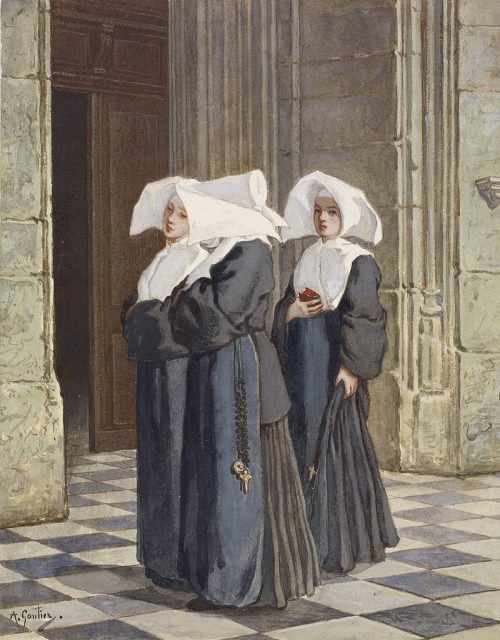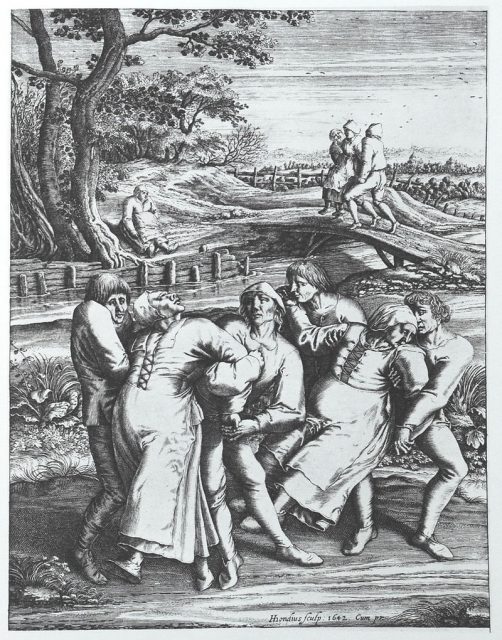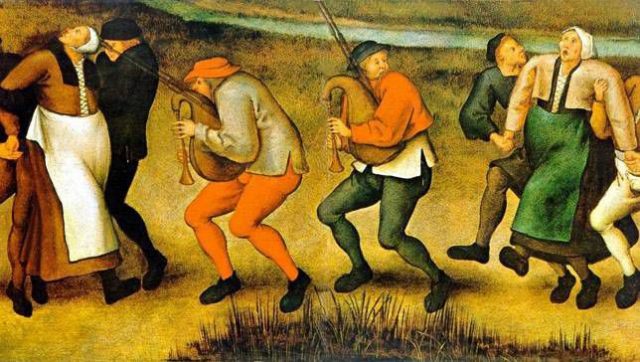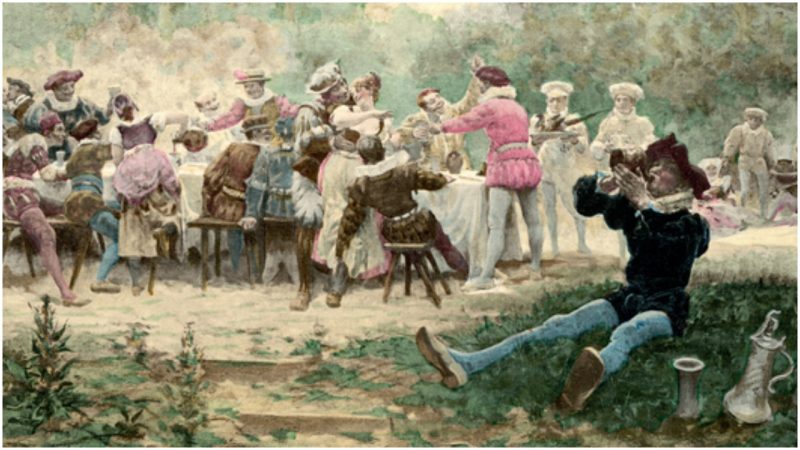Mass hysteria is a term that is frequently used to describe a collective reaction of a group of people to some real or imaginary threat. In some instances, mass hysteria can be a rather dangerous phenomenon, especially when panic-induced despair and paranoia cause people to become violent, or when random people start experiencing actual physical symptoms of a real medical condition.
Throughout the 20th century, most recorded occurrences of the phenomenon were triggered by the fear of disease epidemics, terrorist attacks, nuclear warfare, and serial killers. The collective symptoms often included fainting, breathing difficulties, spasms, screaming, and nausea.
However, according to the historical sources on several recorded instances of mass hysteria that occurred during the Middle Ages, some medieval cases of mass hysteria were distinctly weird with symptoms that were sometimes humorous and other times downright frightening. For example, in the early 14th century, a nun at a secluded Catholic convent in Northern France began meowing like a cat. Within seven days, all other nuns at the convent started meowing and purring: they even organized afternoon meowing sessions that lasted for hours. Since the Catholic theology of the time considered cats to be the Devil’s animals, the nuns were whipped by soldiers employed by the local noblemen and the meowing ceased.

In the mid-15th century, another bizarre case of mass hysteria involving nuns was recorded in Germany. A detailed depiction of the events can be read in the book Epidemics of the Middle Ages, which was written by a renowned German physician and medical writer named Justus Hecker. A nun at a German convent inexplicably started biting her companions.
Over the course of the next several days, all nuns at the convent, along with an unknown number of women from the nearby villages, became “infected” with the biting frenzy. The condition spread all the way to the Netherlands, and the Catholic authorities of the time feared that the Devil himself might have entered the human realm and started possessing people all over Europe. Fortunately, the biting epidemic apparently ended when the frenzied nuns became overly exhausted.

Both of the aforementioned cases were most likely caused by the fact that the people of the time believed in various supernatural phenomena. The fear of both God and the Devil coupled with appalling living conditions caused them to break and sink into mass panic. Furthermore, nuns were exposed to fierce religious indoctrination and were often forced to work beyond the limits of their capabilities, so it is quite understandable that they sometimes became the unfortunate victims of mass hysteria.
Another instance that was most likely triggered by the belief in the supernatural was the so-called “Dancing Plague” of 1518. At that time, as many as 400 people frantically danced and twitched in the streets of the French city of Strasbourg. A number of people died of heart attacks and strokes during the months-long dancing frenzy: the local authorities tried to calm down the mad dancers by providing live music and trying to turn the whole thing into a carnival. However, the dancing stopped only when they were taken to a shrine outside of the city and forced to pray to St. Vitus for absolution.
Contemporary historians believe that the dancing was triggered by the people’s belief in the curse of St. Vitus, which was allegedly able to cause sinners to compulsively dance to death. Also, some believe that the dancers were exposed to the potent psychoactive byproduct of ergot fungi, which causes people to experience convulsions and hallucinations similar to those induced by the psychoactive drug LSD, and that the mad dancers were actually extremely high.

All over the world, the early modern period began with turmoil. Numerous wars were fought all over Europe and the common people’s fear of the supernatural was gradually replaced with the fear of military occupations and violent deaths. An interesting case of mass hysteria related to the fear of death at the hands of armed berserkers occurred in 1688: at that time, after the “Glorious Revolution” resulted in the overthrow of King James II of England, the people of England and Wales were afraid that the vengeful Irish were getting ready to invade their villages and massacre their families.
A single false report, which claimed that a band of marauding Irishmen was seen in the woods around Newport, triggered a gargantuan chain reaction: people in 19 counties armed themselves and anxiously awaited for the Irishmen to come and wreak havoc. After several weeks of waiting, it became apparent that the mad Irishmen would never come, and people quietly returned to their daily activities.
Historical circumstances greatly affect the way in which people perceive the world around them, and they also affect the development of fears and anxieties. It is unlikely that contemporary cases of mass hysteria would involve fear of the supernatural. Instead, the world of today is plagued by the fears of various kinds of terrorism, war, disease, mental instability, and natural disasters, and the contemporary occurrences of mass hysteria are often representations of such phobias.
